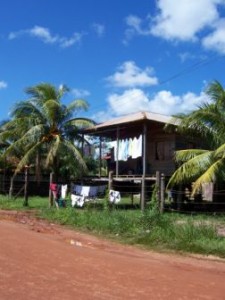Nicaragua at a glance
Living in the Eye of the Storm
Nicaragua has a long and painful history of natural disasters, which have devastated lives, particularly those of the poor and most vulnerable, and suffocated the country’s economic and human development. On September 4, 2007, Hurricane Felix struck the north Atlantic coastal region, killing over 235 people and destroying over 10,000 homes. The region is the poorest in Nicaragua and home to the traditionally marginalised Miskito Indians. Ten years after Hurricane Mitch, the shortcomings of the response to Hurricane Felix revealed the continuing flaws of the country’s disaster preparedness and response mechanisms.
The early warring system failed to correctly anticipate the arrival of the hurricane with many international agencies therefore deployed to neighbouring Honduras and insufficient time for evacuation given in Nicaragua. The lead role played by the national disaster response agency complicated coordination with international actors. Support for “local” efforts was problematic, in particular because of the remoteness and autonomy of the region. Furthermore, traditional response tools and methods – such as needs assessments – had to be adjusted to the local context. In addition to traditional donors, Venezuela played a significant role. However, the latter’s contribution was not transparently recorded, nor was it always in line with international standards and good practice.

Share this